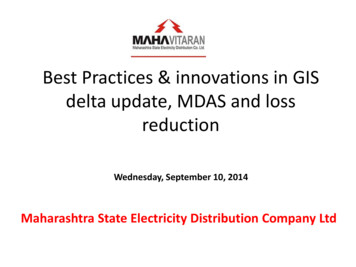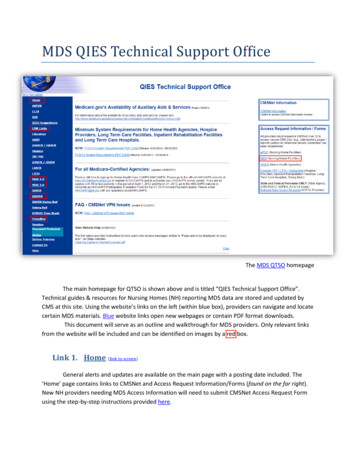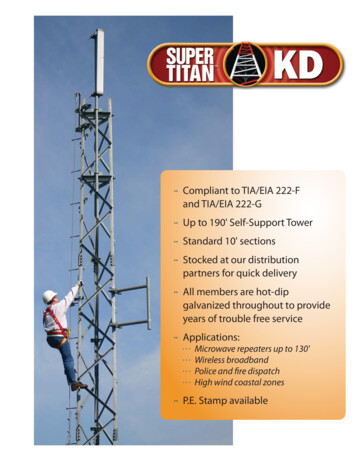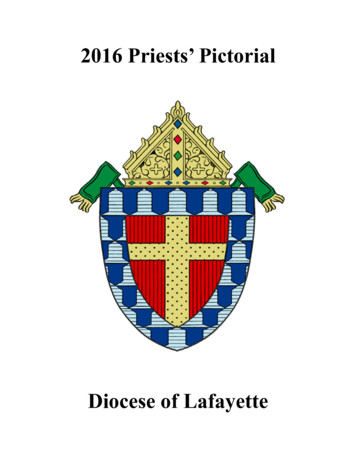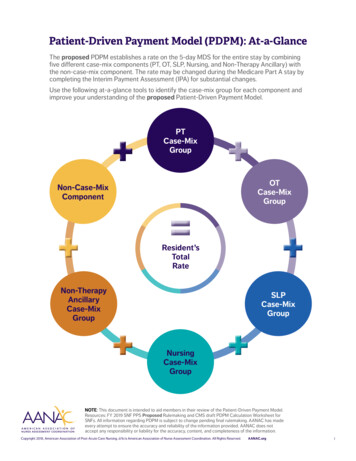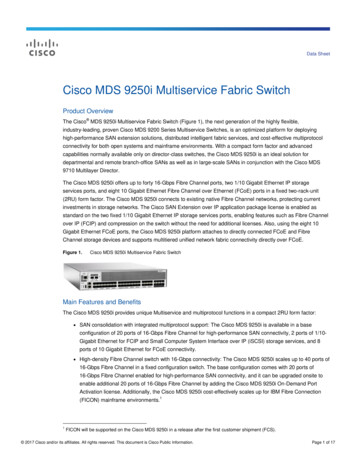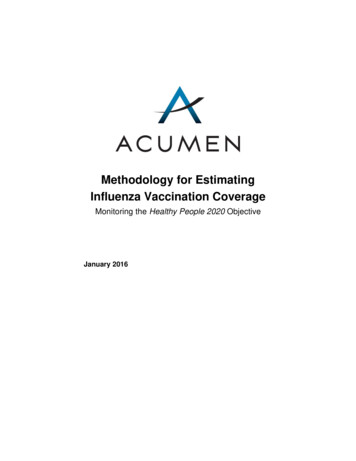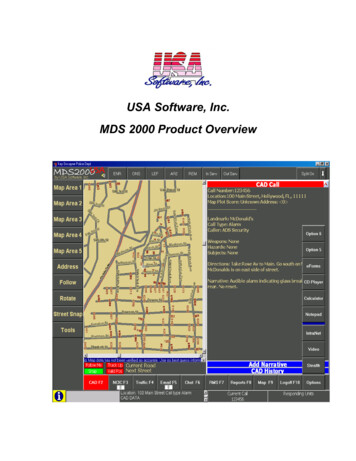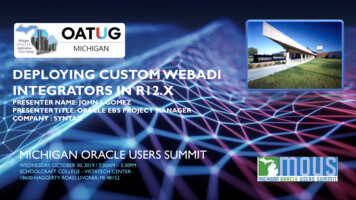
Transcription
MDS LN200 Integrator’s Guide1.0 INTRODUCTIONThe LN200 (Figure 1), is a fixed location (not intended for mobile use), multi-modem system operating in licensedbands between 216-222MHz, using channel bandwidths of 6.25kHz, 12.5kHz, and 25.0kHz. Modulation choices foreach bandwidth include CPFSK, QPSK, 16QAM, and 64QAM. Maximum power and modem speed is based onfrequency, modem choice, and applicable emission mask.The unit is designed for use inside data equipment to provide reliable connectivity in wireless networks. The LN200power control circuit ensures that the RF output is linear and never exceeds 41.3 dBm at the antenna connector.The module is designed for OEM use only. Host systems must be professionally installed. Host systems must befactory configured by the OEM to operate at the correct frequency and output power setting. Refer to the table at theend of this guide to determine applicable antenna types and the RF output power allowed.1.1 Transceiver FeaturesThe LN200 maximizes performance and flexibility in wireless networks, offering the following key features: Selectable frequency (216-222MHz) Selectable bandwidth (6.25kHz, 12.5kHz, 25.0kHz) Selectable modem choices (CPFSK, QPSK, 16QAM, 64QAM) RSSI and EVM readback indicators Store-and-Forward repeater operation Same hardware for Master, Remote, or Store-and-Forward configurations Supports RS/EIA-232(TTL), Ethernet, and USB user interfaces Operates at 5.25 VDC at the MiniPCIe card edge power connections and 10-60Vdc at the 3-pin powerconnector.Figure 1. LN200 Transceiver Module(Mini PCI-Express Card Edge for Data/Power/& I/O and J700 Antenna)NOTE: Some features may not be available on all units, based on the options purchased, or regulatory constraints inthe country of operation.MDS LN200 Integrator’s Guide[1]05‐6949A01, revision 2
2.0 INSTALLATIONThe transceiver is designed for installation in existing electronic equipment. The I/O and 5.25v power connections aremade through the Mini PCI-Express card edge. The 10-60v power is provided through a separate 3-pin connector onthe bottom of the module. The transceiver mounts to the host heatsink assembly using two #4 screws inside the RFcan area. The required heatsink contact area on the bottom surface of the PCB has the solder mask removed forproper heat transfer.Only one cable connection is required to the radio for the J700 Antenna connector. The module has three optionallypopulated status LEDs (CR100, CR101, and CR1000) that indicate operating mode details. These LEDs provideimportant information that is useful during startup and optimization of the radio link.Antennas used with the radio can be either a Yagi directional type (often used at remote sites) or an omni-directionaltype used for short range applications or at Master stations. Contact your sales representative for information onavailable antennas.Follow these steps to install the transceiver module:1.Power down the Host assembly the module is being installed in to.2.Mate the MiniPCIe card edge of the module into the socket on the Host assembly.3.Secure the module to the heatsink surface using two #4 screws through the mounting holes in the corners ofthe RF can area on the radio’s PC board.4.Install the RF shield over the transceiver section.5.Select and install an appropriate antenna and feedline for your system coverage requirements.6.Connect the antenna coaxial lead to J700 on the module. It accepts a Type-TNC male coaxial connector.7.Host Power Supply Requirements:a. Input power applied on the 52-pin connector (J1100) must be a regulated 5.25 Vdc (-/ 0.05 V).b. Input power applied on 3-pin connector (J900) must not exceed the range 10.0-60.0Vdci. Nominal Input power on J900 is in the range 12-52Vdc - FCC CFR 47 2.1055(d)(1)See Table 1 for power supply interface connections.52-Pin GE MDS NIC Card EdgePinDescription1, 6, 7, 10, 11, 13, 12, 14,16, 19, 20, 23, 25, 28, 30,31, 32, 33, 36, 38, 42, 44,45, 46, 47, 48, 49, 512, 24, 39, 41, 523, 5, 8, 17, 224, 9, 15, 18, 21, 26, 27,29, 34, 35, 37, 40, 43, 50GPIO(Includes Ethernet &Serial)3-Pin GE MDS (J900) connectorPinDescription1GND2, 3 10.0-60.0V*Consult FactoryDocumentation forspecific details 5.25VNCGNDTable 1. LN200 Power Supply ConnectionsMDS LN200 Integrator’s Guide[2]05‐6949A01, revision 2
8.Set the radio’s basic configuration with a PC terminal through the Host system. The four essential settingsfor all transceivers are (See Section 3 for commands): Frequency Bandwidth Modem Power9.In a normally operating system, you will see the CR101 POWER LED turn on at start-up.10. Optimize the installation by checking: Antenna aiming and RSSI check Optimal modem rate setting3.0 RADIO PROGRAMMINGThere are no manual adjustments on the radio. All programming and control is performed through a PC connected tothe Host platform that interfaces with the radio’s J1100 MiniPCIe card edge connector.3.1 User CommandsThe following tables provide descriptions of the various user commands for the transceiver.CommandDescriptionABOUTDisplays NIC version build time anddate.Displays all available commands.Software reset.Display the NIC serial number.Display/set NIC modem selection.Display/set NIC symbol baud rateselection.Read/write test address.Starts a Packet Error Rate Test.HELPRESETSERMODEMBAUDTEST ADDRTEST PERUPTIMEMDM KEYMDM KEYRMDM KEYLOMDM DKEYMDM PRBURSTMDM RSSI!TX [val]RX [val]TCXO [arg1]TCXO CAL [arg1]Display the amount of time since lastpower cycle.Transmits un‐modulated CWTransmits modulated random dataTransmits pass through of LO throughTX chainDisables active transmissionTransmits a modulated random databurst of 511 bytes, useful for trainingthe receiver equalizerInstantaneous RSSI readingRead/write TX frequencyRead/write RX frequencyChange TCXO tuning voltageCalibrate TCXO tuning voltageNotes[4QAM, 16QAM, 64QAM][4800,9600,10000,16000,20000][0‐7] Address used for tests (e.g. PER)[‐a] Destination test address[‐n] Number of packets to send[‐l ] Length of each packetdB[val] ‐ frequency in MHz[val] ‐ frequency in MHz[arg1] ‐ Tuning voltage in V[arg1] ‐ Tuning voltage in VTable 2. LN200 User CommandsMDS LN200 Integrator’s Guide[3]05‐6949A01, revision 2
4.0 DC INPUT REQUIREMENTS4.1 Power Consumption RatingsThe module has the following nominal power consumption ratings when operated at the required (V NIC) inputvoltage of 5.25 Vdc (-0.05/ 0.05 V tolerance) and the required secondary input voltage of 10.0-60.0 Vdc on J900:Active Receive Mode: 130mATransmit Mode (Worst Case Load): 1.3 AmperesPower Regulation must be met by OEM to satisfy LMA conditions:OEM Integrator should consult with Product Support for individual circuit implementations. The input voltage on the 3pin J900 connector accepts a wide range and routes to onboard regulator on the LN200 module, but the V NIC inputon the 52-pin connector must be carefully regulated.At minimum, OEM Integrators must regulate the DC voltage applied to 5.25 Vdc (V NIC), with a toleranceof -0.05/ 0.05 Vdc. This can be achieved using a voltage regulator similar to the Texas Instruments LMR12020,which is a precision DC regulator. The external 5.25 Vdc input is connected via pins 2, 24, 39, 41, and 52 of the 52pin MiniPCIe card edge connector. The transmitter uses a closed-loop power detection circuit that ensures the peakRF power will never exceed 41.3dBm.The input voltage range of the LMR12020 device in this configuration is 10V to 15V. Using switched-mode powerconversion technology, the LMR12020 can step down to voltages as low as 1.13V from a 10V input bus, with typicallyless than 1 W of power dissipation. The output voltage must be set to a voltage of 5.25V, using an external trimresistor. Operating features of the TI device include cycle-by-cycle current limiting, under-voltage lockout (UVLO),on/off inhibit, output overcurrent protection, and over-temperature protection.For example purposes, a circuit employing this method of regulation is shown below in schematic form.5.0 REGULATORY AND RF OUTPUT POWER REQUIREMENTS5.1 Technical AssistanceFactory technical assistance is available by contacting GE MDS during business hours (8:30 AM to 6:00 PM EasternTime). Use one of the following means to contact the factory:Telephone: (585) 241-5510FAX: (585) 242-8369E-mail: gemds.techsupport@ge.comWeb: www.gemds.comMDS LN200 Integrator’s Guide[4]05‐6949A01, revision 2
5.2 Regulatory Information, LN200 ModuleFCC Part 15 NoticeThis Equipment has been tested and found to comply with the limits for a Class A digital device, pursuant to Part 15of the FCC Rules. These limits are designed to provide reasonable protection against harmful interference when theequipment is operated in a commercial environment. This equipment generates, uses, and can radiate radiofrequency energy and, if not installed and used in accordance with the instruction manual, may cause harmfulinterference to radio communications. Operation of this equipment in a residential area is likely to cause harmfulinterference in which case users will be required to correct the interference at their own expense.This device complies with Part 15 of the FCC Rules. Operation is subject to the following two conditions: (1) thisdevice may not cause harmful interference, and (2) this device must accept any interference received; includinginterference that may cause undesired operation.Warning: Changes or modifications not expressly approved by the manufacturer could void the user’s authority tooperate the equipmentServicing PrecautionsWhen servicing energized equipment, be sure to wear appropriate Personal Protective Equipment (PPE). Duringinternal service, situations could arise where objects accidentally contact or short circuit components and theappropriate PPE would alleviate or decrease the severity of potential injury. When servicing radios, all workplaceregulations and other applicable standards for live electrical work should be followed to ensure personal safety.Manual Revision and AccuracyThis manual was prepared to cover a specific version of firmware code. Accordingly, some screens and features maydiffer from the actual unit you are working with. While every reasonable effort has been made to ensure the accuracyof this publication, product improvements may also result in minor differences between the manual and the productshipped to you. If you have additional questions or need an exact specification for a product, please contact GE MDS,using the information provided in section 5.1 Technical Assistance above.Environmental InformationThe manufacture of this equipment has required the extraction and use of natural resources. Improper disposal maycontaminate the environment and present a health risk due to hazardous substances contained within. To avoiddissemination of these substances into our environment and to limit the demand on natural resources, we encourageyou to use the appropriate recycling systems for disposal. These systems will reuse or recycle most of the materialsfound in this equipment in a sound way. Please contact GE MDS or your supplier for more information on the properdisposal of this equipment.Product Test Data SheetsTest Data Sheets showing the original factory test results for this unit are available upon request from the GE MDSQuality Leader. Contact the factory using the information at the back of this manual. Serial numbers must be providedfor each product where a Test Data Sheet is required.Grounding RequirementsTo minimize the chance of damage to the unit and connected equipment, a safety ground (NEC Class 2 compliant) isrecommended which bonds the antenna system, chassis, power supply and connected data equipment to a singlepoint ground, keeping all ground leads as short as possible. Normally, the unit is adequately grounded if the suppliedmounting brackets are used to mount it to a well-grounded metal surface. If the unit is not mounted to a groundedsurface, it is recommended that a safety ground wire be attached to one of the mounting brackets or a screw on theenclosure. The use of a lightning protector is recommended where the antenna cable enters the building. Bond theprotector to the tower/support ground, if possible.All grounds and cabling must comply with applicable codes and regulations.MDS LN200 Integrator’s Guide[5]05‐6949A01, revision 2
FCC Limited Modular Approval NoticeThis device is offered as an FCC Licensed Limited Modular Transmitter (LMA). Applicable rule parts include Part 90,95 and Part 80. The transmitter module is approved for use only with specific antenna, cable and output powerconfigurations that have been tested and approved for use when installed in devices approved by third-party OEMs,or produced by the Grantee (GE MDS). Modifications to the radio, the antenna system, or power output, that have notbeen explicitly specified by the manufacturer are not permitted, and may render the radio non-compliant withapplicable regulatory authorities. When this module is placed inside an enclosure, a durable label must be affixed tothe outside of the final host device and shall be labeled with “Contains FCC ID: E5MDS-LN200, Contains IC: 101DLN200” indicating the module’s FCC ID & IC Numbers.Note: A host product is required to comply with all applicable FCC & Industry Canada equipment authorizationsregulations and/or requirements and equipment functions not associated with the transmitter module portion. Forexample requirements for any co-location of additional transmitter with the module and/or at the minimum compliancewith FCC part 15B & IC ICES-003; Digital device are the sole responsibility of the OEM integrators for the final hostdevice.RF Exposure WarningsThe antenna(s) to be used with this module must be installed with consideration to the guidelines for RF exposurerisk to all nearby personnel, and must not be co-located or operating in conjunction with any other antenna ortransmitter.Concentrated energy from a directional antenna may pose a health hazard to humans. Do not allow people to comecloser to the antenna than the distances listed in the table below when the transmitter is operating. More informationon RF exposure can be found online at the following website: fetyand http://www.hc-sc.gc.ca/ewh-semt/consult/ 2014/safety code 6-code securite 6/final finale-eng.phpConcentré d'énergie à partir d'une antenne directionnelle peut poser un risque pour la santé humaine. Ne paspermettre aux gens de se rapprocher de l'antenne que les distances indiquées dans le tableau ci-dessous lorsquel'émetteur est en marche. Plus d'informations sur l'exposition aux RF peut être trouvé en ligne à l'adresse quency-safety et http://www.hc-sc.gc.ca/ewhsemt/consult/ 2014/safety code 6-code securite 6/final finale-eng.phpSafety DistanceLN2000-5 dBiAntenna Gain *5-10 dBi10-11.1 dBi1.622 meters2.884 meters3.273 meters* Values are based on 41.3 dBm at 216.0MHz, using 100% duty cycle. Note that these values include margin foracceptable tolerance and are extremely conservative. QAM modulation peak-to-average ratio and duty cycle due tomedia access control ensure that this limit is never reached in a real customer-accessible operating mode.Calculations are based on the more restrictive limits associated with Canada Safety Code 6 regulations.Antennas with gain greater than 11.1 dBi are not offered for this device. Installation of the device into portableapplications is not authorized.For fixed point-to-point applications all requirements in IC SRSP-501 section 6.3.2 must be followed. Note that themaximum ERP shall be limited to that which is required to achieve system reliability requirements and shall notexceed 125 watts (less where required). Antennas with gain that violate this requirement are not permitted.MDS LN200 Integrator’s Guide[6]05‐6949A01, revision 2
5.3 RF Output SettingsConsult Table 3 for the applicable power settings. The LN200 is a multi-modem system operating between 216222MHz, in channel bandwidths of 6.25kHz, 12.5kHz, and 25.0kHz. Modulation choices in each bandwidth includeQPSK, 16QAM, and 64QAM. OTA Rate and maximum power is based on the modem choice and the applicableemission mask for the operating frequency.Bandwidth Modem CPFSK QPSKkHzsymbols (x1)(x2)persecondOTA 012.525.025.025.0960016000200001920016QAM 64QAM MaximumComments / Restrictions(x4)(x6)OutputPowerOTAOTAbpsbps19200 28800 41.3 dBm Max. Rate depends on operating frequency38400 57600 41.3 dBm Max. Rate depends on operating frequency40000 60000 41.3 dBm Max. Rate depends on operating frequency9600---41.3 dBm-32000 64000 96000 41.3 dBm-40000 80000 120000 41.3 dBm19200---41.3 dBmMax. Rate depends on operating frequencyMax. Rate depends on operating frequencyMax. Rate depends on operating frequencyMax. Rate depends on operating frequencyTable 3. LN200 Power Output5.3 Offered AntennasConsult Table 4 for offered 8A5597-4278A5697-4278A57DescriptionANTENNA, YAGI, 216-240MHz, 5 dBd, 3 ELEMENT, NF,TELEWAVE ANT220Y7-WRYagi 220-250MHz 9.2dBi215-225 MHz, 6 dBd Yagi215-225 MHz, 9 dBd Yagi215-225 MHz, 7 dBi omniANTENNA, 216-225 MHz, 2 ELEMENT DIPOLE, 5.0 dBdOFFSET GAIN, N MALE TERMTable 4. LN200 offered antennasMDS LN200 Integrator’s Guide[7]05‐6949A01, revision 2
MDS LN200 Integrator's Guide 05‐6949A01, revision 2 [1] MDS LN200 Integrator's Guide 1.0 INTRODUCTION The LN200 (Figure 1), is a fixed location (not intended for mobile use), multi-modem system operating in licensed bands between 216-222MHz, using channel bandwidths of 6.25kHz, 12.5kHz, and 25.0kHz. Modulation choices for
